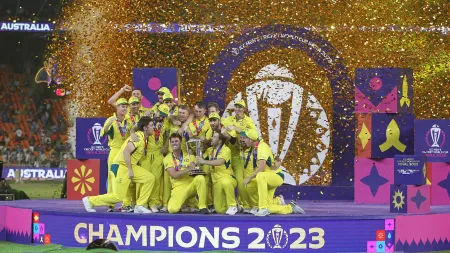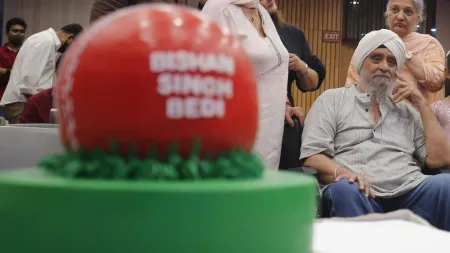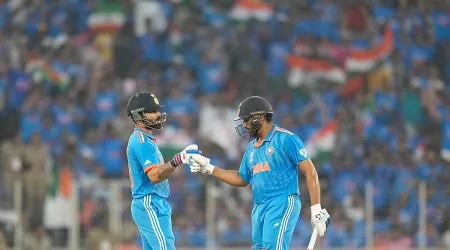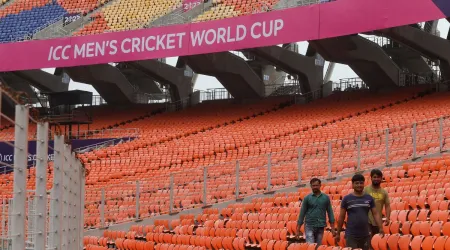- India
- International
The bang-bang club
Mihir Vasavda profiles a new crop of shooters, some of whom have displaced seniors.
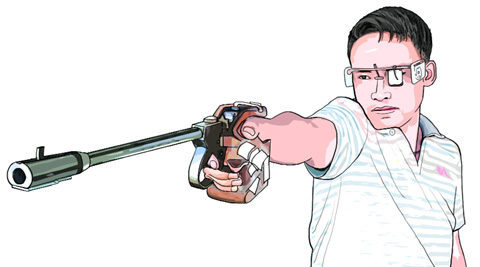 Last month, within a span of nine days, Jitu Rai did what no Indian shooter had done before
Last month, within a span of nine days, Jitu Rai did what no Indian shooter had done before
Shooting is one sport which gets India the most medals. Glasgow is unlikely to be any different. Mihir Vasavda profiles a new crop of shooters, some of whom have displaced seniors, and are set to make a mark at the Games.
Last month, within a span of nine days, Jitu Rai did what no Indian shooter had done before.
The unassuming marksman first won a silver medal in 10m air pistol at the World Cup in Munich. A week later, with the caravan of shooters moving to Maribor in Slovenia, Rai won another silver (in 50m pistol) and followed it up with a gold in 10m air pistol.
Nine days, three medals! Not surprisingly, when the new rankings were released, Rai had jumped 25 places to be number one in the 10m air pistol category. From being a nobody, the 27-year-old from Lucknow was now the nawaab of his event.
Curiously, though, Rai will not be competing in his pet event at the Glasgow Commonwealth Games. Unfortunately for Rai, he hit the purple patch a bit too late. By the time he completed the hat-trick of medals, the selection trials for the CWG were already over. The strict policies enforced by the National Rifle Association of India (NRAI) meant there was no way back in the 10m air pistol team for India’s newest shooting star.

Rai is not the only one to watch his signature event from the stands at the Barry Buddon Shooting Centre. London Olympics bronze medallist Gagan Narang, Ronjan Singh Sodhi, one of the most accomplished shooters in the country, and multiple-time CWG gold medallist Samresh Jung are among the shooters who have failed to qualify for their preferred events. Sodhi and Jung, in fact, have failed to find themselves a seat on the plane to Glasgow.
One of the most commonly held myths in shooting is that experience almost always triumphs over youth. Age is no bar. Calm heads on responsible shoulders are preferred over youthful exuberance of the 20-somethings.
But Indian shooting has dispelled that myth and seems to be on the threshold of something exciting. The four-year cycle from the last CWG in Delhi to the 2014 edition that begins in Glasgow on Wednesday has changed the landscape of the sport in the country. The old guard is no longer safe and with the young shooters constantly snapping at their heels, they have to fight for their place in the team.
“We are on the verge of something really exciting and interesting,” says Samresh Jung. “Shooters have always brought more medals for India than any other sport. Now we have a proper structure in place for athletes so that they do not have to struggle for funds, coaches and equipment like a lot of us went through. And it is yielding results.”
Indeed, shooting has stood out among other Olympic sports in India not just for its rich results, but its unique policies. Despite the internal bickering among the officials, which came to the fore during its elections, the NRAI has made all the right noises when it comes to governing the sport.
During the period in which the Indian Olympic Association (IOA) was suspended and the country faced an Olympic exile, the NRAI ensured the shooters were not affected. They held nearly 30 training camps, managed to increase its funding and held national championships for all age groups, while ensuring the players were sent for international competitions.
Senior shooters too have played an important role in ensuring there’s a steady stream of talented shooters, along with institutions like the Army, Navy and Air Force. Narang’s Pune-based academy Gun For Glory has provided technical assistance and shooting gear to several marksmen while Beijing Olympics gold medallist Abhinav Bindra launched a scholarship for young shooters in January.
The help has poured in from outside the shooting fraternity too. The Olympic Gold Quest has taken 18 shooters under its wings, nine of whom are in Glasgow. The trust provides technical and financial support to the shooters apart from providing physios and sports psychologists. The Anglian Medal Hunt Company, which perform a similar role, supports 10 shooters.
“Success breeds success,” says Jung, who has won eight CWG gold medals in his three appearances at the event. “We’ve stuck to the basics, doing the little things right. We have top international coaches, nice and accessible infrastructure and the private bodies have chipped in. People have identified shooting as a sport where we can win medals. So this isn’t entirely surprising.”
The recipient of Best Athlete award at the Melbourne CWG in 2006, ‘Goldfinger’ Jung will watch the Glasgow Games from the comfort of his living room instead of the high-pressure environment at the shooting ranges.
Snapping at the heels
He is not the only one. The NRAI’s strict selection policy coupled with increasing pressure from the young shooters meant that several seasoned shooters either missed the bus or failed to qualify for their pet events.
The NRAI took into consideration the aggregate of scores recorded at the last six events before the cut-off date, which included the World Cups, National Championships and selection trials.
Reputations have counted for nothing and Sodhi was among the biggest casualties. Troubled by poor form and constantly put under pressure by the young and rapidly improving shooters, ‘Shotgun Sodhi’ could not find a place in the team for Glasgow. Instead, Mohd Asab and Ankur Mittal will be harbouring India’s hopes in one of the most exciting shooting events.
Asab, 27, has grown in stature over the last couple of years and shot a world record score of 136 in the qualification round of the World Cup in Acapulco in March. For 21-year-old Mittal, this could well be a breakthrough year. He earned his maiden top-10 finish in double trap at the World Cup last month in Almaty.
Narang’s omission from the 10m air rifle team was another surprise, if not a shock. The Hyderabadi, who won bronze medal at the London Olympics in this event, has, instead, been replaced by promising youngster Ravi Kumar, who has shot better scores consistently.
“The level of competition has increased several folds, which is great. As an accomplished shooter, one cannot rest on his or her laurels,” Jung says. “What these young shooters have done is that they have pushed the average scores a bit high. So everyone have to be on their toes all the time.”
A similar renaissance is being seen on the women’s side as well. Apurvi Chandela, Elizabeth Susan Koshy and Heena Sidhu, all in their early 20s, have shown a lot of promise. However, the one turning heads is 10m pistol shooter Malaika Goel.
At 16, she has firmly cemented her place in the national team after winning medals at the national and continental levels. “She is the best talent to have emerge in recent years. Very promising,” Jung observes.
It’s tempting to call this phase of Indian shooting as the change of guards. But let’s not jump the gun. The CWG will be their first real test of nerves; of competing in a high pressure environment. India already face a handicap having seen the number of shooting events halved compared to Delhi 2010.
Glasgow will see shooters compete for just 19 gold medals as against 36 on offer four years ago as the organisers have done away with several events, most notably the pair competitions.
All eyes will be on the Rais, Asabs, Kumars and Koshys and see how they perform. “It’ll speak a lot about them. The atmosphere at the World Cups and nationals is still quite relaxed compared to the CWG, Asian Games and Olympics. These events come once in four years so everyone wants to win here,” Jung says.
“You need to win a medal here to show that you are the real deal. It won’t be easy, but I won’t put it beyond their abilities.”


















